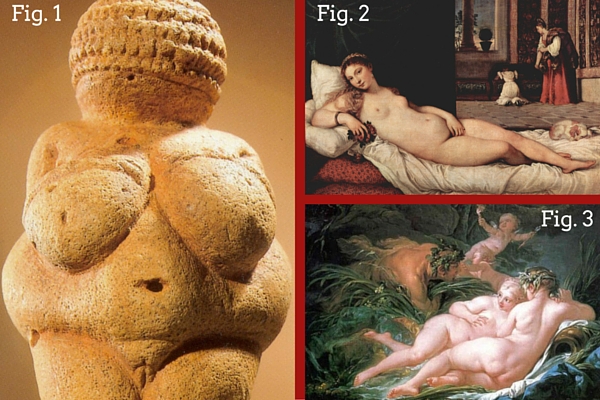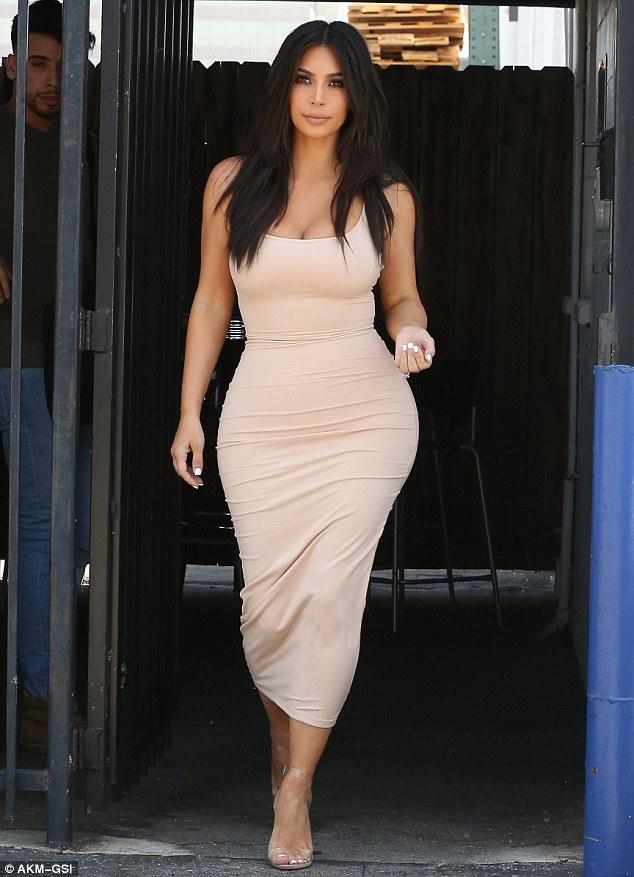Our society may be advancing into the future rapidly with self-driving cars, 3D printers, and laser surgeries, but there is still one area that is distinctly in the past: the relationship between the female body and unrealistic beauty ideals. The peak of beauty in today’s world is a woman who has a large butt and full breasts, but has a tiny, toned waist in the middle.
Women are bombarded from every angle by the media about what their bodies should look like. Billboards proclaim to have the secret pill that will finally shed those extra pounds, tabloids have an array of celebrity-endorsed weight loss products, and online advertisements specifically target those researching how to lose weight.
The ideal body that all these different media sources are promoting is a new take on the classic hourglass. Women are told they should have a large butt and breasts, but the waist in between should be slim and toned. Anyone who has worked out before knows that this is a near-impossible physique to attain; exercising removes fat, and breast tissue is almost all fat. Unless you were born with “perfect” genetics, this ideal body type is unattainable, except for those who take the surgical route.
The biggest fans of plastic surgery in today’s world are female celebrities. It is difficult to think of an actress or model who has not had even just a little bit of work done on their body. Famed Beverly Hills plastic surgeon, Dr. Renato Calabria has worked on a great number of celebrities in the area. He estimates 40% of female celebrities between the ages of 20 and 30 have had procedures done, whereas when celebrities get to be 45 years of age and older, almost 100% opt for some surgical help.
By partnering with diet programs, fitness regimes and clothing brands, celebrities are only reinforcing the image that the hourglass figure is the absolute peak of beauty that women should strive for. But this begs the question, “Are normal women today trying to look like celebrities, and are these ideal bodies only achievable through surgery?”
One of the most rigorously pushed aspects of this idolized look is the presence of a tiny waist. In every direction that women turn, they are faced with an image of a woman with a slim waist, whether it be the fashion industry or health industry.
Even companies trying to be progressive by showing more diverse sizes, are in essence still just showing us the same body type over and over. The tiny waist with a large butt and breasts is just shown in slightly different sizes; a petite hourglass frame, an average hourglass frame and a woman a couple pounds overweight with an hourglass frame.
Celebrities like Kim Kardashian, Beyoncé, JLo, and Kate Upton are praised for having the “real woman’s body” with curves and cellulite, but it is unlikely that any of these women achieved their body naturally. So-called plus size Hollywood celebrities like model Ashley Graham and actresses like Rebel Wilson and Melissa McCarthy have prime hourglass shapes, just in a slightly bigger size.

Media from every angle is promoting this body type, and unfortunately this is not the first time society has told women what they should look like. There is a long history of female body modification throughout the ages, and what we are experiencing today is just another episode of a familiar phenomenon.
Chinese foot binding is one of the more gruesome and extreme types of female body modification. Foot binding emerged around the 10th and 11th centuries, and became most popular under the Song Dynasty (960-1279 CE.) Originally only upperclass court dancers partook in this morbid trend, but as its popularity increased, the trend spread. Foot binding was a way to display status in society—wealthy women who did not need their feet for work could afford to have them bound. These miniature, crumpled limbs were called “lotus feet,” a trend which did not lose popularity until the early 20th century with the intervention of humanitarian groups.
One of the most popular body modification movements throughout history was the use of wearing a corset to cinch the waist into an hourglass shape. These waist supports were originally made out of cloth and either whalebone or ivory to act as ribs that would be fastened together with lacing. The rise of corset wearing can be attributed to Catherine de’ Medici, the queen of France during the mid-16th century. This queen enforced a ban upon thick waists in her court attendance. Archeologists and researchers have also found evidence of corsets on the ancient Greek island of Crete.
Interestingly enough, the presence of a thin waist has not always been a beauty ideal in society. One of the earliest works of art ever created is the prehistoric, “Venus of Willendorf” (Fig. 1,) dating back to between 28,000-25,000 BCE. This crude carving of a female body features sagging breasts draped over an even fatter waist. It is believed that this hand-sized sculpture was a fertility god, whom women would pray to. In this instance, the matronly, stout figure was actually idealized, because it symbolized being more fertile, and thus more likely to create offspring.
In addition, the lounging women in Italian Renaissance master Titian’s “Reclining Venus of Urbino” (Fig. 2,) 1538 CE, and French Rococo virtuoso François Boucher’s “Pan and Syrinx” (Fig. 3,) 1759 CE feature voluptuous, almost paunchy women without clearly defined waists. In the eras in which these works were painted, bodies were a clear indication of social status. A wealthy bourgeoisie member who was able to afford food would overeat until they had this type of body. Peasants with manual labor jobs barely scraping by would obviously have the more wiry, thin bodies that are so popular today.

With the Victorian Age of the late 19th century, the thin waist became the ultimate beauty ideal. This unnatural shape was achieved through the use of corsets, which often had extremely grave consequences on the body. If cinched tight enough, the bottom section of the lungs would shirk and fill with mucus. Women would then have trouble breathing, with the possibility of passing out completely. In addition, ribs would break and organs were crushed into the minimal abdominal space that was left. It would seem like women would be glad that this fashion statement finally faded out after the Victorian Era, but perhaps to the surprise of many, waist cinching has come back at full force in the last few years.
The term “waist training,” as it is called today began to rise in August of 2013, and peaked in March of 2015 according to Google Trends. It is also thanks to the popularity of social media celebrities that waist training has been doing so well. The Kardashians are all spokeswomen for waist trainers. The fiancé of Rob Kardashian, Blac Chyna, is reportedly paid $2,000 per Instagram post, and just so happens to be endorsed by the waist training brand, “Instacurve.”
“Celebrity influence through social media has been the primary factor for sales growth,” says CEO Ruben Soto of the Chicago-based waist training company “Hourglass Angel.” Another modern day corset company, “Waistgang Society,” with over 550,000 Instagram followers reports that “sales have steadily been increasing over the past two years.” Instagram is the most popular social media platform for waist training due to its visual nature. On Instagram, the search #wasittraining has almost 750,000 posts, #corset has almost 790,000 posts and #hourglass has over 522,000 posts.
Many of these waist-focused images online display a woman wearing barely any clothing, to show off the tiny waist, big boobs and large butt she has worked so hard for. The waist management phenomenon of today’s society has created a very narrow version of what women are allowed to look like. By dressing the way that media has deemed, “sexy” and “beautiful,” women are just following the rules that our society has imposed on women. As these beauty ideals are constantly shifting and changing, women are not really independent from the visual representation of the female sex around them.

